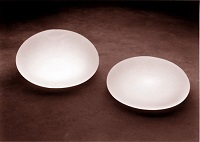
According to an article posted to Fortune.com, more than 8 million breast-related plastic surgeries have taken place in America in just the past 20 years alone, to say nothing of decades past. 2018 saw more than 400,000 such surgeries on its own. Short of a temporary ban of silicone implants that ended in 2006 when the substance was once again allowed to be used in the devices’ manufacture, little has been made of breast implant safety.
That was until a link was discovered between textured breast implants and a form of breast cancer known as breast implant-associated anaplastic large cell lymphoma, or BIA-ALCL. Caused when the texture of the implant creates abrasions in surrounding tissues, it can be remedied in some cases by the removal of the implant and timely treatment, however, the condition is also responsible for more than 30 fatalities thus far.
Textured implants were mostly used in augmentation surgeries performed outside of the US market. While American surgeons usually employed smooth-surface implants, European markets and others used textured implants based on what is now the generally rejected notion that the texture of the implant helped the device stay in place better than its smooth surfaced counterpart. However, further research would later reveal that smooth-surfaced implants could also trigger BIA-ALCL. The result has been a significant increase in attention to the safety of all forms of breast augmentation surgeries around the world and a spotlight on the safety practices of the world’s three main implant manufacturers. Questions are now being asked about who knew what and when they knew it. And the answers have been less than reassuring to those that carry the corporations’ products inside their bodies.
The Fortune.com piece mentioned above takes an extensive look at these issues and others and provides excellent background for those wishing to learn more about an issue that we are sure to hear more about as time goes on.
